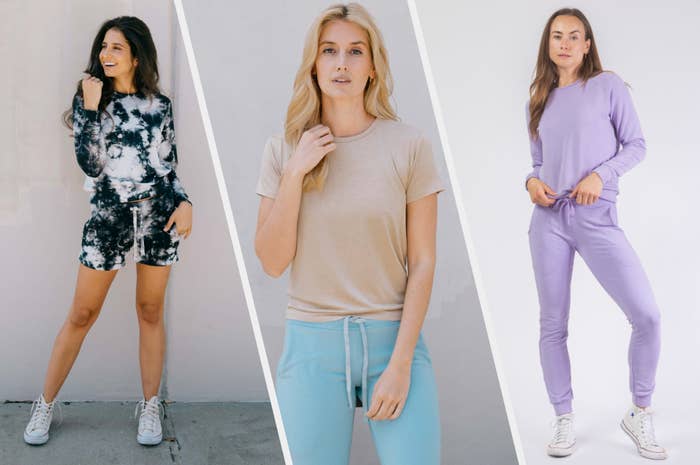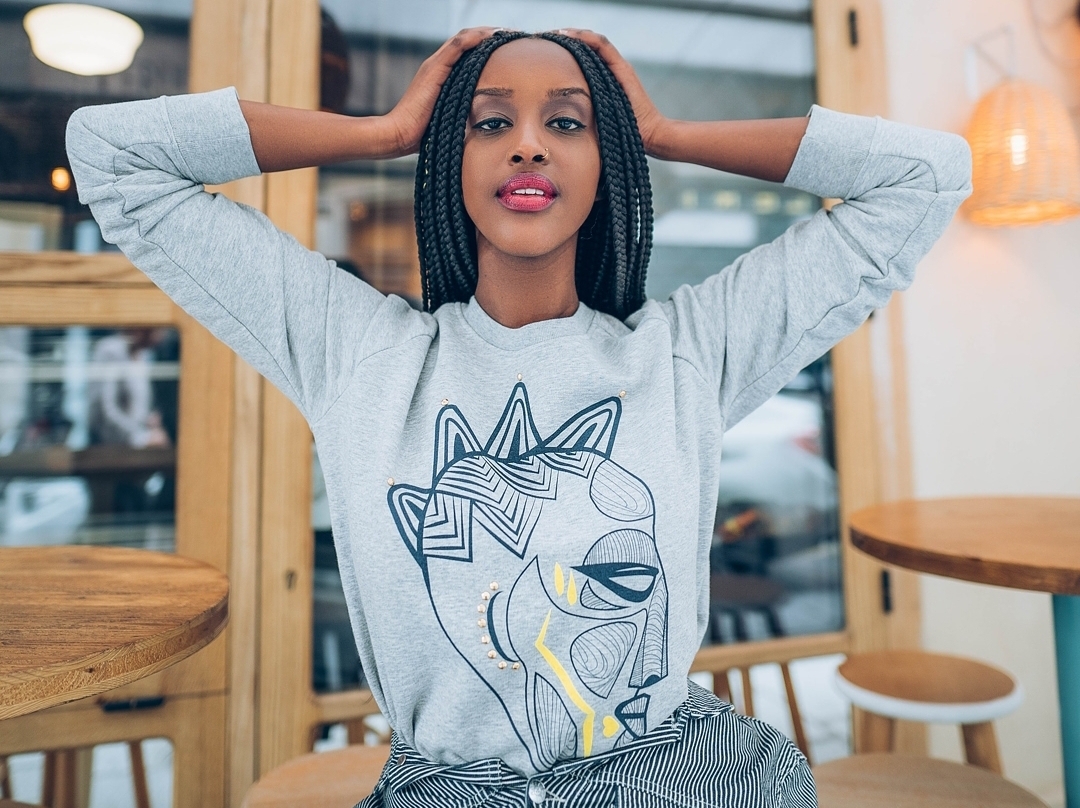The Value of Lasting Clothing: Just How It Affects the Setting and Your Wardrobe
Lasting clothes is increasingly acknowledged for its important function in decreasing the environmental effect of the quick fashion business. By concentrating on green products and moral production approaches, it addresses pressing environmental problems. This shift not only profits the planet but also affects customer options, leading to a more thoughtful strategy to wardrobe administration. Comprehending these characteristics raises crucial concerns regarding style's future and individual obligation fit it.
The Environmental Impact of Fast Fashion

Benefits of Lasting Materials
Lasting products supply significant benefits, specifically via environmentally friendly material choices that lessen ecological damage. These materials additionally show durability and longevity, reducing the need for regular substitutes. As a result, they add to a more sustainable fashion business and advertise liable customer habits.
Eco-Friendly Fabric Choices
While the garment industry has actually long been related to quick patterns and ecological damage, the surge of environmentally friendly textile selections provides a transformative possibility. Lasting materials such as natural cotton, hemp, and Tencel have gained appeal because of their lower environmental impact. These materials are commonly created without harmful chemicals and require much less water, minimizing their carbon footprint - Branded Clothing. In addition, lots of green fabrics are biodegradable, contributing to a round economy by reducing waste. Picking lasting materials not just sustains ecologically accountable practices but likewise advertises healthier ecosystems. As customers come to be much more knowledgeable about their acquiring power, the demand for eco-friendly materials urges brand names to innovate and take on more lasting production methods, inevitably profiting the planet and future generations
Resilience and Durability Benefits
Many consumers are progressively recognizing the sturdiness and longevity benefits of lasting products in their garments selections. Unlike standard fabrics, sustainable materials such as natural cotton, hemp, and recycled polyester are engineered to hold up against deterioration, causing garments that last much longer. This reduced frequency of replacement not only saves customers cash with time yet also decreases waste generated by fast fashion. Additionally, lasting garments often employs environment-friendly production methods that boost fabric toughness, adding to a decrease in the total carbon impact. By purchasing sturdy clothing, consumers can grow an extra lasting closet while delighting in high-quality pieces that keep their aesthetic and functionality over time. Subsequently, longevity and longevity stand as key benefits of picking lasting materials.
Decreasing Waste Through Lasting Practices
Decreasing waste in the fashion business can be achieved with cutting-edge methods such as upcycling and repurposing products. Furthermore, adopting minimal closet approaches encourages customers to focus on high quality over quantity, ultimately reducing clothing intake. Together, these strategies add substantially to an extra sustainable clothing design.
Upcycling and Repurposing Materials
Upcycling and repurposing products have actually arised as innovative approaches in the fashion market, changing disposed of fabrics right into beneficial new items. This method not just reduces waste but likewise motivates creativity and uniqueness in apparel design. By taking old garments and products, designers can develop one-of-a-kind items that mirror personal style while lowering the demand for new sources. In addition, upcycling usually requires less energy and water compared to standard production procedures, significantly decreasing the environmental footprint of style. As customers end up being a lot more aware of sustainability, the popularity of upcycled apparel continues to rise, advertising a round economic climate. Ultimately, these practices add to a more sustainable future, where style focuses on ecological health over fast production and usage.

Minimalist Wardrobe Techniques
As people significantly seek to minimize their environmental impact, adopting minimalist closet approaches has actually obtained grip as an efficient technique to lasting style. These methods highlight high quality over quantity, encouraging customers to curate a smaller sized collection of flexible, long lasting clothing. By concentrating on ageless items that can be mixed and matched, people can lower the regularity of acquisitions and eventually lower waste.Additionally, minimalism advertises conscious usage, prompting customers to mirror on the ethical and ecological effects of their selections. This technique not just promotes a more lasting way of life however additionally streamlines day-to-day decision-making pertaining to clothing. As people embrace minimal principles, they add to a fashion society that values sustainability and accountable consumerism, ultimately leading to an extra eco-conscious society.
The Duty of Honest Labor in Sustainable Style
While many consumers are progressively knowledgeable about the ecological consequences of their clothing selections, the value of ethical labor practices in lasting fashion can not be ignored. Ethical labor includes fair earnings, safe working problems, and respect for employees' rights, developing the foundation of responsible style manufacturing. Brand names that prioritize honest labor not just uplift neighborhoods but likewise established a standard for responsibility in the industry.Moreover, the integration of moral practices promotes openness, enabling consumers to make enlightened selections about their purchases. This technique contrasts sharply with rapid fashion's unscrupulous labor designs, which often prioritize profit over individuals. By sustaining companies dedicated to honest labor, customers add to a system that values human dignity along with environmental sustainability. Moral labor is not just an add-on; it is crucial to the broader goal of lasting style, making sure that the quest for eco-friendliness does not come at the expenditure of human rights.
The Effect of Sustainable Clothes on Carbon Emissions
Sustainable clothes has the possible to considerably reduce carbon exhausts related to the garment industry. Standard garment production adds especially to greenhouse gas exhausts, mainly because of energy-intensive manufacturing procedures and using non-renewable resources. On the other hand, sustainable fashion focuses on environmentally friendly materials, such as natural cotton or recycled fibers, which often call for less power to produce.Moreover, lasting brands tend to take on more effective manufacturing techniques, minimizing waste and lowering overall discharges. By focusing on sturdiness and timeless style, lasting clothing urges customers to click to read buy less frequently, additional lowering the carbon impact linked with overconsumption.Additionally, several sustainable brands are committed to transparency in their supply chains, allowing customers to make educated choices that straighten with their values. Inevitably, shifting towards sustainable garments can lead to a substantial decrease in carbon emissions, adding to a healthier world and a much more lasting future for the style sector.
Sustaining Regional Economic Climates With Sustainable Options
The shift towards lasting apparel not just addresses environmental worries yet also substantially benefits neighborhood economies. By choosing lasting from this source fashion, consumers usually support tiny organizations and neighborhood craftsmens, enhancing community durability. These business generally operate on a smaller range, prioritizing workmanship and moral techniques over mass production.Investing in locally made lasting garments cultivates job production and stimulates financial growth within neighborhoods. As customers become more knowledgeable about the environmental impact of their purchases, they progressively look for products that mirror their worths. This demand urges regional producers to take on lasting methods, adding to a round economy.Moreover, sustaining neighborhood organizations decreases transportation discharges, lining up with eco-conscious customer actions. The interconnectedness of lasting clothes and neighborhood economic situations underscores the important role that private selections play in advertising both ecological and economic wellness. By cultivating these neighborhood connections, neighborhoods can prosper while also working towards a much more lasting future.
Transforming Your Wardrobe: Tips for a Lasting Closet
As people seek to decrease their ecological influence, transforming a storage room right into a sustainable wardrobe ends up being a crucial action. One efficient strategy is to assess existing clothes, maintaining just items that are put on routinely which align with sustainability goals. Focusing on quality over quantity is crucial; investing in durable pieces from environmentally friendly brand names can significantly minimize waste.Additionally, including second-hand things can rejuvenate a wardrobe while decreasing ecological damage. Organizing clothing swaps with buddies or contributing unused items can further advertise sustainability.When shopping, people should look for materials that are organic, recycled, or eco-friendly, and stay clear of rapid fashion stores Get More Information - Branded Clothing. Lastly, practicing conscious consumption by thoughtfully considering each acquisition can add to an extra lasting way of living. By executing these pointers, one can develop a wardrobe that mirrors personal design while sustaining ecological stewardship
Regularly Asked Concerns
Just How Can I Determine Lasting Clothes Brands?
To recognize lasting garments brands, one should look into products used, look for accreditations like Fair Profession, and check out the brand name's openness regarding their manufacturing processes, labor practices, and environmental impact, making certain ethical and green practices are prioritized.
What Are the Prices Connected With Sustainable Style?
The prices linked with lasting fashion can differ significantly. Higher production expenditures, moral sourcing, and eco-friendly products frequently lead to boosted retail prices, which might hinder some consumers while interesting eco mindful shoppers.
Can Lasting Garments Be Stylish and fashionable?
Sustainable clothing can indeed be fashionable and trendy. Designers significantly focus on ingenious products and moral production approaches, proving that style and sustainability can exist together. Consumers currently have diverse options that mix visual appeals with ecological consciousness.
How Does Laundering Clothes Affect Their Sustainability?
Cleaning clothing significantly influences sustainability by consuming water and energy, adding to pollution, and creating microplastic launch. Regular cleaning can break down materials, shortening their life-span and boosting the demand for replacements, eventually worsening environmental issues.
What Is the Life Expectancy of Lasting Apparel Contrasted to Quick Style?
The life expectancy of sustainable apparel generally goes beyond that of rapid style things, frequently enduring numerous years due to quality materials and craftsmanship. In contrast, fast style garments may break down rapidly, necessitating more regular replacements. Lasting apparel is significantly recognized for its crucial role in reducing the ecological influence of the quick style market. While numerous customers are increasingly aware of the ecological consequences of their apparel selections, the significance of moral labor practices in sustainable style can not be forgotten. Branded Clothing. Sustainable clothes has the potential to substantially lower carbon exhausts connected with the fashion industry. In comparison, lasting fashion focuses on environment-friendly products, such as organic cotton or recycled fibers, which commonly call for less power to produce.Moreover, lasting brand names tend to adopt much more efficient manufacturing methods, minimizing waste and lowering overall discharges. By prioritizing longevity and classic layout, sustainable clothing encourages customers to purchase much less regularly, additional reducing the carbon impact linked with overconsumption.Additionally, numerous sustainable brands are devoted to transparency in their supply chains, allowing consumers to make enlightened choices that align with their worths